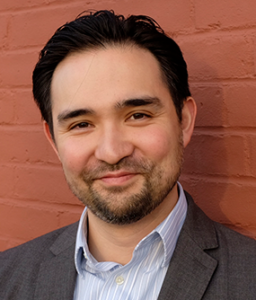Food Addiction and Related Disorders

Samantha is a 34-year-old woman who presents with distress over her inability to control her eating habits. She describes intense cravings, especially for fast foods like burgers and potato chips, and admits to eating in secret. She has tried multiple times to cut back but feels irritable and anxious without her regular “fix.” Samantha denies feelings of guilt or shame about the amount she consumes, but instead mentions withdrawal symptoms when she tries to reduce her food intake. She recalls starting to overeat during a stressful period in her early 20s, a time when she also noticed her BMI starting to increase. She’s been diagnosed with depression but has never been assessed for an eating disorder or food addiction.
Food addiction is a new and still somewhat controversial concept in the fields of addiction and eating disorders. Whether someone can be truly addicted to certain foods, or the act of eating itself, is an open question. Some are skeptical as to whether the concept of addiction can be applied to an activity that is necessary to stay alive, but research suggests that there is validity to food addiction as its own diagnostic entity (Gordon EL et al, Nutrients 2018;10(4):477).
While specific diagnostic criteria have yet to be formally defined, conceptualizing overeating behavior within a framework of addiction can help us better understand, and ultimately treat, some patients. Here, we will examine the emerging concept of food addiction, discuss how it distinguishes itself from binge eating disorder (BED), consider how to diagnose food addiction in patients, and review treatment approaches.
What is food addiction?
Food addiction is described as a compulsion to consume specific foods or a general addiction to the act of eating itself. Only recently have the concepts of food addiction and BED begun to be parsed apart. The behavioral manifestations of both conditions are similar; patients tend to be overweight or obese and eat unhealthy amounts of food. However, the underlying dynamics that drive the disordered eating differ between the two diagnoses.
Binge eating disorder
BED is listed in DSM-5 as an eating disorder alongside well-known diagnoses such as anorexia and bulimia nervosa. Like these other eating disorders, drivers of disordered eating in BED are centered around self-perception, weight, and body image. This is reflected in criteria laid out in the DSM-5—embarrassment about amount of food consumed, feelings of disgust, and guilt about overeating, for example (www.tinyurl.com/yc8hkwfc)[PDF]. Interestingly, some criteria do sound suspiciously similar to substance use disorder (SUD), such as inability to stop eating once started and a sense of lack of control, for example.
Food addiction
Though there is some overlap, the underlying dynamics driving food addiction are fundamentally different from BED. Rather than concerns centered on weight and body image, patients with food addiction have an experience much more akin to an SUD. Symptoms of food addiction, like the DSM criteria for SUDs, include cravings, failed attempts at cutting back, and social impairment. People with food addiction may even develop withdrawal symptoms that manifest as anxiety, irritability, and difficulty concentrating (Parnarouskis L et al, Obes Rev 2022;23(11):e13507).
While some patients seem to have an addiction to the act of eating itself, most tend to eat excessive amounts of foods classified as “hyperpalatable.” These are ultra-processed foods that are high in salt, sugar, saturated fat, or artificial flavors and are ubiquitous in most industrialized cultures, such as fast food, candy, and potato chips (Gearhardt AN et al, Curr Drug Abuse Rev 2011;4(3):140–145). These foods are calorie dense, but low in their ability to satisfy food cravings, so people can eat large amounts of them in a single sitting, leading to an increased risk of serious medical conditions such as high blood pressure, type 2 diabetes, hyperlipidemia, and cardiovascular disease.
Epidemiology
Given the lack of official diagnostic criteria, exact numbers are hard to come by, but it’s believed that food addiction is highly prevalent. One large meta-analysis found that the prevalence of food addiction might be as high as 20% in the general population (Vasiliu O, Front Psychiatry 2022;12:824936). Other research suggests that food addiction might be two to 2.5 times more common among people with obesity, though the population samples from which these figures were drawn had significant selection bias (Constant A et al, Nutrients 2020;12(11):3564).
Food addiction does not affect people evenly across the population. Those with depression, psychosocial stressors, anxiety, or a history of food restriction early in life have an increased risk of developing food addiction. One study in college-age students found that, like other eating disorders, food addiction is more common among females, people of White ethnicity, and those who have experienced adverse childhood events (Wattick RA et al, Eat Weight Disord 2023;28(1):14).
Recognizing and diagnosing food addiction
Food addiction can be challenging to recognize. There are no definitive physical findings or biological markers that can be relied upon, though recent findings do suggest that there are metabolic changes in dopaminergic reward pathways (Mestre-Bach G and Potenza MN, Nutrients 2023;15(4):827). Instead, a proper diagnosis relies on having a high index of suspicion and taking a careful history. Pay particular attention if a patient mentions distress associated with eating or a propensity to consume hyperpalatable foods (Clark SM et al, Obes Surg 2019;29(9):2923–2928).
Language
Individuals with obesity are commonly the targets of stigmatization and fat shaming. These can alienate your patient and disrupt therapeutic rapport, and they are associated with a host of negative health outcomes (Papadopoulos S and Brennan L, Obesity (Silver Spring) 2015;23(9):1743–1760). Therefore, it is important to maintain a nonjudgmental stance and use person-first language when gathering history about eating patterns and behaviors (Rubino F et al, Nat Med 2020;26(4):485–497). A quick introductory statement before gathering a history (eg, “These are questions that I ask all my patients.”) can help people feel less singled out or targeted. It can also be helpful to use a structured screener, especially for providers who are inexperienced when it comes to evaluating eating disorders.
Screening
Consider screening for food addiction using the Yale Food Addiction Severity Scale (YFAS) whenever you see patients with red flags. This validated scale is modeled after DSM-IV criteria for substance dependence and can be used for both screening and diagnostic purposes (Charzy´nska E et al, Nutrients 2022;14(19):4041). It focuses on emotions related to eating certain foods, negative consequences of eating, maladaptive behaviors, and social impairment (Clark et al, 2019). The full questionnaire and scoring instructions can be accessed at www.tinyurl.com/352mx7sk.
Treatment
Cognitive behavioral therapy (CBT) has been shown to be effective in the treatment of SUDs as well as the treatment of eating disorders and obesity (Marchesini G et al, Int J Obes Relat Metab Disord 2002;26(9):1261–1267). CBT for food addiction focuses on identifying triggers that can lead to episodes of overeating and the development of adaptive coping strategies to deal with cravings and negative emotions. Highly restrictive diets have been shown to be less effective than those that maintain an element of flexibility; therefore, the goal of CBT should be to develop a normalized eating pattern rather than one that is highly restrictive (Adams RC et al, Nutrients 2019;11(9):2086).
For the most part, pharmacologic treatments of food addiction are limited to the treatment of comorbid psychiatric conditions such as depression and anxiety. Some medications with evidence, such as SSRIs and the antiepileptic drugs topiramate and zonisamide, are reasonable to try for patients with food addiction. However, lisdexamfetamine, which is FDA approved for the treatment of BED, does have addictive potential, leading some to caution against its use for patients with food addiction (Ratkovi´c D et al, J Int Med Res 2023;51(4):03000605231171016).
Another treatment option is peer support groups such as Overeaters Anonymous (OA; www.oa.org). OA has adopted the 12-step framework of Alcoholics Anonymous and applied it to food addiction and eating disorders. The framework’s efficacy in SUDs, at least for some patients, suggests that it could be helpful for patients with food addiction as well, though this has not been studied directly. Given its lack of evidence, we recommend that OA be utilized as an adjunctive, rather than primary, treatment modality.
CARLAT VERDICT
Food addiction distinguishes itself from BED in its underlying dynamics. Suspect food addiction in patients with obesity or who consume large amounts of hyper-palatable foods. Be sure to gather a careful history with all patients using nonjudgmental language and consider using the YFAS as a screening tool. The primary treatment is CBT, through SSRIs, antiseptics, and adjunctive peer support groups can be considered as well.



_-The-Breakthrough-Antipsychotic-That-Could-Change-Everything.webp?t=1729528747)



